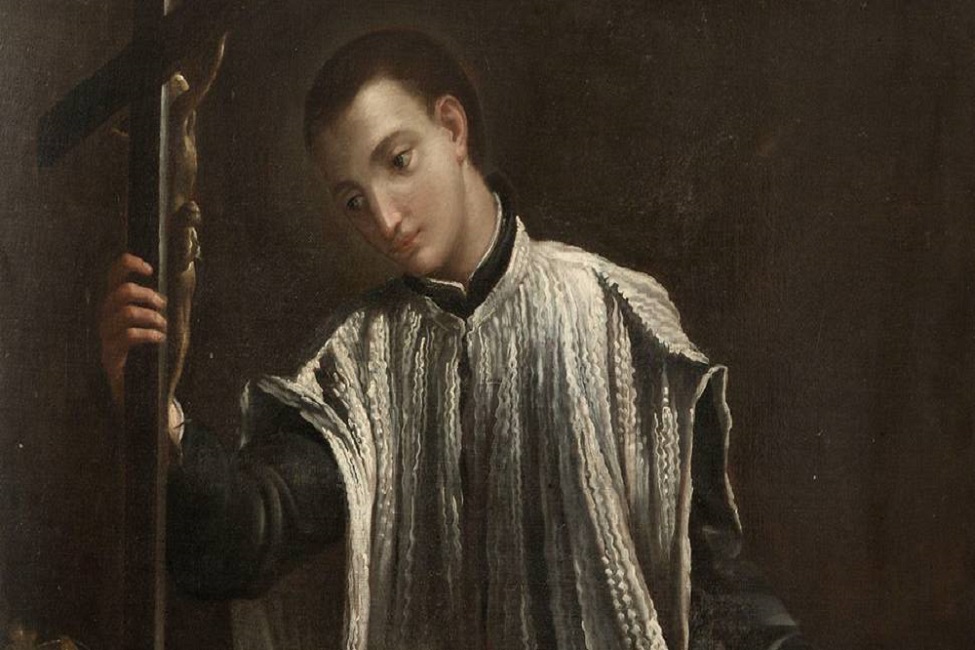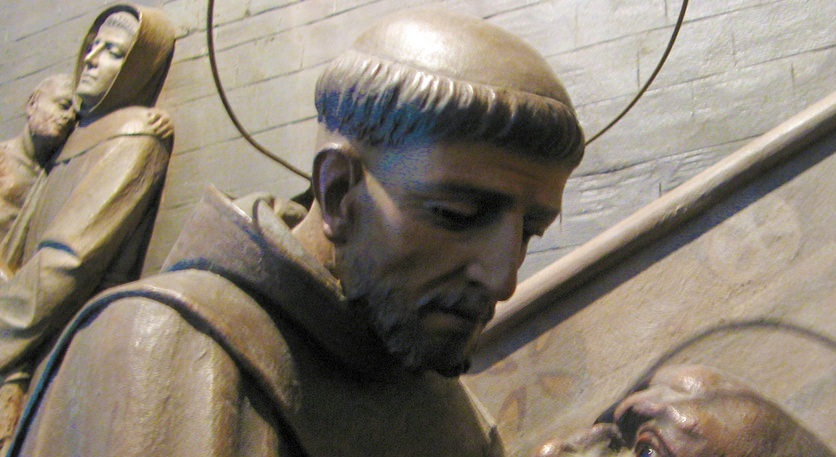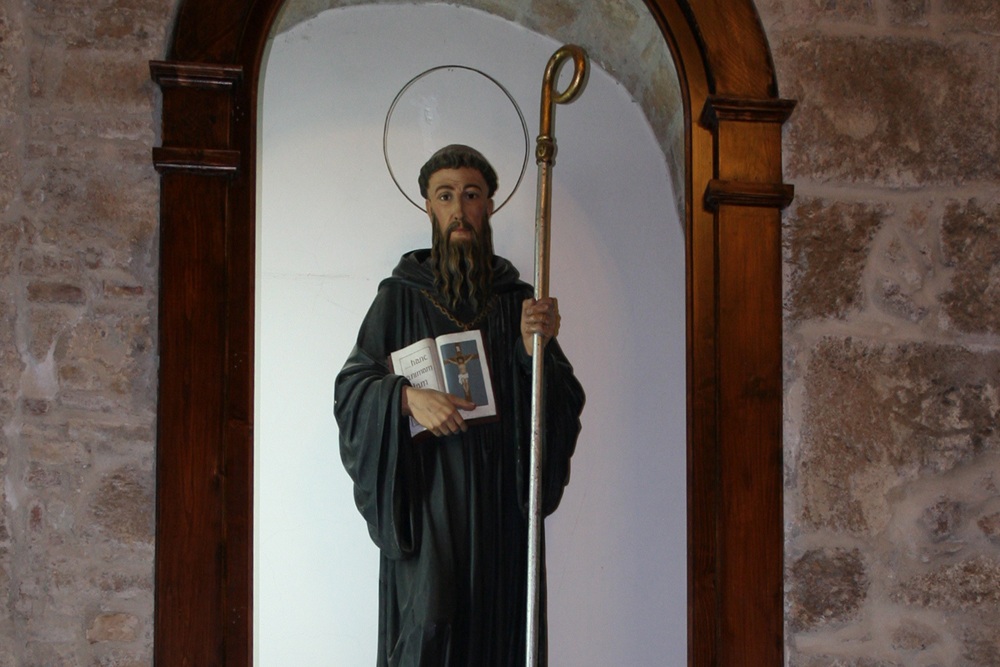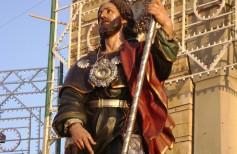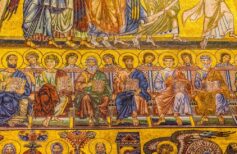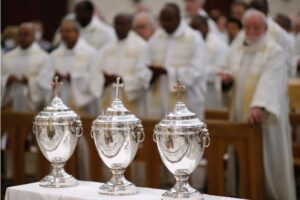Saint Louis Gonzaga is one of those young people who, in the history of the Church, have dedicated their short lives to cultivating the virtues and caring for others. Young saints who live in eternity and are models of life and faith for today’s youths.
Today we are talking about Saint Louis Gonzaga, one of the so-called “young saints”. And in his case, this definition is truer than ever, since St. Louis of the Young is the patron saint. Canonised in 1726 by Pope Benedict XIII, he was later declared by the latter protector of the students, while Pius XI appointed him in 1926 as patron of Catholic youth.
Again, in 1991 John Paul II attributed to him the patronage of AIDS patients.
We have said that St. Louis Gonzaga is a young saint. As we will see, he died at just twenty-three years of age. The death of a child or a very young person is always tragic. It affects the whole community, conveying a sense of profound helplessness and disbelief. It is as if the premature end of a young life takes away a little future and confidence from everyone. This is because to the gravity of death in and of itself is added the awareness of a life broken at birth, of the annulment of all that could have been and never will be. The greatest merit of these young boys and girls is precisely that they have been able to cultivate their spirit in such a short time, carrying out actions that merit beatification.

What do these young saints show us, these flowers too soon cut, perhaps because they are destined to adorn a heavenly Garden, to which only the most worthy can aspire? Their lesson is precious and twofold: on the one hand, they teach us that holiness has no age, that it is not necessary to have lived many years and to have gained a long experience of life to be able to perform actions worthy of being sanctified. On the other hand, they show us how true immortality lies precisely in being remembered over the years and centuries by virtue of the good deeds that have been accomplished in a short life.
This dual value makes them role models for their peers of every era, examples to follow and imitate, to be inspired to find courage and strength in difficult times. Never as in our time, when young people seem to have lost their reference values, when it is so easy to abandon oneself to discouragement, often for futile reasons, does one feel the need for such examples.
On 21 June, one of these young saints is celebrated, the very emblem of youth, the patron saint of boys and girls of all times: St. Louis Gonzaga.
The History of the Saint
Before discovering the history of St. Louis, we want to dwell on a somewhat neglected aspect of his person. If we look at the saints and the images that depict him as a delicate young man wearing the black and white robe of the Jesuits, with a lily in his thin hands and his gaze languishingly lost in the contemplation of a crucifix, the perception we can have of him is perhaps a little limited. Because St. Louis was certainly a gentle-looking boy, but he was also so stubborn and determined to oppose with all his strength the life that others had decided for him, to pursue his dream and dedicate his life to God. We can therefore speak of a rebellious young man, and for young people, it is perhaps easier to identify with a rebellious man, rather than with one of their peers with an air that is too mild and submissive.

Saint Louis was born on 9 March 1568 in Castiglione delle Stiviere, in the province of Mantua, the eldest son of Marquis Ferrante Gonzaga, Lord of Castiglione, and Marta Tana di Chieri, the favourite lady-in-waiting of Philip II of Spain’s third wife, Elizabeth of Valois. He belonged to one of the most powerful families of the Italian Renaissance and, as the eldest son, his father appointed him as his heir and invested all his hopes in him. From an early age, therefore, Louis had to follow his father when he engaged in military exercises and reviewed his troops. He did so wearing a child’s armour that Ferrante had made especially for him. The environment of the soldiers was certainly not the most suitable for such a small child, but Louis obeyed the wishes of his father, who wanted to introduce him to the craft of weapons as soon as possible.
However, already at the age of seven, the child began to show a certain impatience for that kind of life dedicated to violence and abuse. He began to pray more and more often, feeling an early call to God. His desire to escape from the mundane and often turbulent life of the nobles of his time increased when sent with his brother Rodolfo to Florence, he came into contact with the corrupt court of the Grand Duke of Tuscany Francesco de’ Medici. He was so disgusted by that environment dedicated to intrigue and decadence that he closed himself more and more in himself, until he pronounced, at only ten years old, the vow never to offend God with sin again. He began to undergo fasting and often extreme religious practices, praying on the stone floor of his own icy room, and striving strenuously to maintain his chastity and modesty. His constant yearning for holiness led him to excesses that he later acknowledged. After all, having no one to guide him and advise him on his spiritual path, he had to try to find his own way.
“I am a piece of twisted iron, and I entered religious life to be straightened out,” he said of himself, once he became a Jesuit.
In the meantime, he devoted himself to the study of literature, sciences, philosophy and theology. His father did not easily resign himself to his change, sending him to many Italian and European courts, hoping to divert him from his religious obsession. In Brescia in 1580, Louis received First Communion from Cardinal Carlo Borromeo on a visit.
His father came to send him as a page to Spain, following Mary of Habsburg, the widow of Emperor Maximilian II.
But Louis was more determined than ever to follow his own path. In fact, in Madrid, he had a Jesuit confessor and decided to join the Society of Jesus. However, Ferrante’s permission was needed, and he threatened to whip him if he did not cease his religious fanaticism. But in the end, it was he who had to give in.
Louis renounced the title of Marquis, in favour of his younger brother, and Ferrante sent him to Rome, with a letter to the superior general of the Jesuits, in which he had written: “I simply mean that I am delivering into the hands of His Most Reverend Excellency the most precious thing he possesses in the world.”
On 25 November 1585, at the age of seventeen, Luigi Gonzaga entered the Society of Jesus as a novice. Paradoxically, the lifestyle as a novice was much less rigid and austere than what he had imposed himself at home. His superiors ordered him to eat more and pray less, and reduce penances.
He lived and studied in Rome, which he left only for short periods. Here, amid the epidemics that were mowing down the population, he dedicated his young life to the care of those suffering from plague and typhus. And this despite having confessed to his spiritual contact that he felt a terrible disgust at the sight and smell of the sick. Healthy, tried by that very hard lifestyle, in 1591 he became ill after attending a hospice of the Hospital of the Consolation, sick with the plague. She died at the age of twenty-three, with the name of Jesus on her lips, as Joan of Arc.

Symbol of faith and courage: Joan of Arc, holy warrior
Joan of Arc, also known as the Flea of Orléans is a French national heroine. Her figure inspired…
“When two Jesuits came to him, they noticed that his face had changed and they understood that their young Louis was about to die. His eyes were fixed on the crucifix he held in his hand; he died while trying to pronounce the name of Jesus”. (Joseph Tylenda SJ, Jesuit Saints and Martyrs).
Patron Saint of Students
As we have already mentioned, Pope Benedict XIII declared St. Louis protector of the students in 1729. This title inspired many religious congregations throughout the centuries that dedicated themselves to the education of young Catholics: the Brothers of St. Louis Gonzaga, born in the Netherlands in 1840; the Oblate Sisters of St. Louis Gonzaga, founded in 1815; the Maestre Luigine of Parma.
Pope John Paul II, who in 1991 went on a pilgrimage to Castiglione, said of Louis: “I am here in this historic shrine to celebrate with you St. Louis Gonzaga, a young model of youth, who lived so long ago, but is still very current because he is dedicated to the values that never set in. He was a heroic apostle of charity. He separated himself from everything to embrace the Whole… He did not despise the world, but rather consecrated himself to God to love him more and better.”
Other young saints
We mentioned in the opening article that St. Louis was only one of the young Saints and Blessed ones who have shown over the centuries how holiness knows no age limits.
We want to mention just a few.
San Domenico Savio was a pupil of San Giovanni Bosco and died at just fourteen years of age. Profoundly devoted to the Immaculate Conception, assiduous to the sacraments of Penance and the Eucharist, Don Bosco helped forty-four of his boys in 1856 during the terrible cholera epidemic, from which all of them miraculously escaped unharmed. Later, however, he fell ill with tuberculosis and died before his fifteenth birthday. He was proclaimed a saint in 1954 by Pope Pius XII.

Saint Agatha, the patroness of Catania, lived in the 3rd century. The proconsul Quintianus became infatuated with her and persecuted her, first trying to get her to be corrupted by a courtesan and her daughters, then imprisoning her and causing her to be tortured horribly. Agatha was whipped and her breasts were torn with pliers, and then she suffered the torment of burning coals. She is one of the seven virgins and martyrs remembered in the canon of the Mass.

To Saint Joan of Arc, we have recently dedicated a long in-depth study. Patroness of France, during the Hundred Years’ War she led the army of Charles, Dauphin of France and later king, against the British and their Burgundian allies. Betrayed by her captains and abandoned by her King, she was burned at the stake by the British at just nineteen, after a sham trial in which she was accused of witchcraft and heresy.


